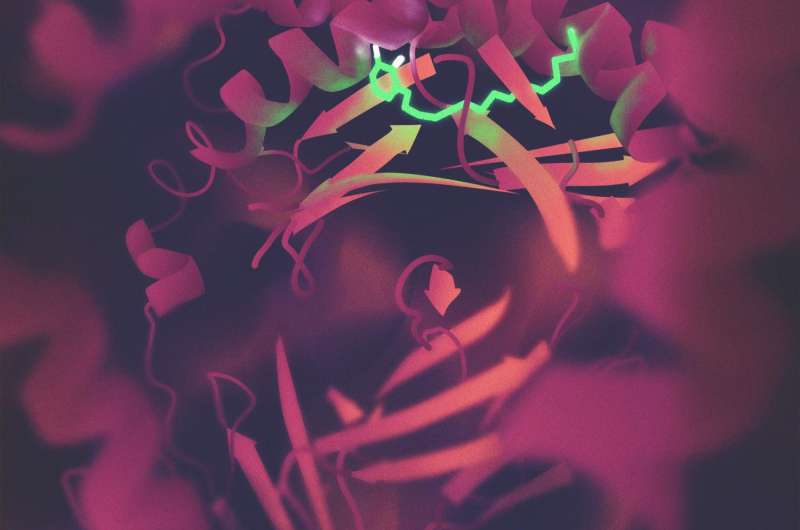Immune breakthrough: Unscratching poison ivy's rash

We all know that a brush with poison ivy leaves us with an itchy painful rash. Now, Monash University and Harvard researchers have discovered the molecular cause of this irritation. The finding brings us a step closer to designing agents to block this mechanism and sheds light on other serious skin conditions, such as psoriasis.
The international team of scientists have shown, for the first time, a connection between an immune molecule found in the skin and skin sensitisers—the research was published overnight in Nature Immunology.
Professor Jamie Rossjohn, co-lead author with Dr Florian Winau, Harvard Medical School, confirmed the body's immune molecule, CD1a, plays a crucial role in mediating skin inflammation and irritation after contact with urushiol—the 'active ingredient' found in plants endemic to Northern America and parts of Europe and Australia.
"A complex set of experiments, coupled with imaging techniques at the Australian Synchrotron revealed the molecular interplay between CD1a and urushiol. This highlights CDIa's role in sudden and uncomfortable skin reactions," Professor Rossjohn says.
Dr Tang Yongqing and Dr Jerome Le Nours say the research team needed a combination of scientific creativity and ingenuity to crack the CD1a-urushiol code.
"For over 35 years we have known CD1a is abundant in the skin," says Dr Le Nours. "Its role in inflammatory skin disorders has been difficult to investigate and until now has been really unclear. Our work, which included imaging the CD1a-urushiol connection, represents clear evidence that CD1a is instrumental in skin-related diseases."
"Our results were strengthened by in vivo and clinical studies at Harvard Medical School, in the United States," Dr Yongqing says.
The studies in Boston also showed that blocking the function of CD1a prevents the triggering of this skin-based allergic reaction, giving the researchers further evidence of just how important CD1a is.
"Future research could lead to the development of new treatments to combat minor skin irritations as well as chronic inflammatory skin diseases like psoriasis, eczema and rosacea," says Dr Yongqing.
"We now have a target to further investigate. Our basic discovery may make a big difference in the future treatment and prevention of inflammatory skin diseases," Dr Le Nours concludes.
More information: Ji Hyung Kim et al, CD1a on Langerhans cells controls inflammatory skin disease, Nature Immunology (2016). DOI: 10.1038/ni.3523


















